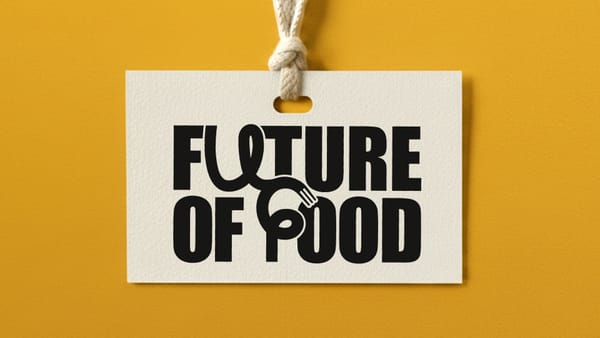UNSTUCK 017: How new is too new?
Most new launches fail. The 80/20 rule of innovation can help you beat the odds.

95% of new product launches fail. Why?
In many cases it’s a simple lack of product market fit. Products that there is no real consumer need for, which, if you’ve been keeping up with Unstuck, you’ll know is the big problem for any solutions that are purely marketed as more sustainable.
But there’s another problem where many fall down. That of familiarity, or lack of it. As we’ve discussed before, most of our decisions as consumers are made quickly and subconsciously. We shop based on habit and disrupting our long-established repertoires is a very, very difficult thing to do.
The warm blanket of familiarity
Daniel Kahnemann, a leading figure in the fields of behavioral economics and judgment and decision-making, described our core mode of decision making as that which operates effortlessly and instinctively, relying on intuition and past experiences. Given we make most of our decisions with this emotional, not rational, part of our brains, innovation is successful (the 5% that make it) when it’s wrapped in the reassuringly familiar.
Apple’s iPhone, arguably the most successful new product launch of our generation, was wrapped in familiar design cues for the first decade of its existence. Just think back to the wooden shelves of the newsstand app, the raised buttons of the calculator, or the green felt of the game center. This strategy known as skeuomorphism helped propel it to the $2tn success we know today.

The job of innovators is therefore to strike the right balance between familiarity (which our emotional brains like because they can process it quickly) and novelty. System 1, a research platform designed around Kahnemann’s work into how our brains make decisions, has a database of well over 50,000 product ideas that they’ve tested with consumers and correlated with in-market performance of those that go onto launch. They call this balance Fluent Innovation and have identified the sweet spot to be 80% familiar and 20% new and surprising. In their words, “in a world where most new products fail, the most crucial goal for innovators isn’t change, it’s acceptance”.
So we’ve put some sustainable food innovations through the 80:20 lens to show how this is a helpful guide for all businesses building in this space to be thinking about. Critically it’s not about how novel or otherwise the innovation actually is, it’s about how it’s positioned to the consumer.
Too weird: Raging Pig

A sausage from peas and mushrooms, made to taste like pork. No novel ingredients here and plenty to build reassuringly familiar from. Instead they’ve taken the path of confronting consumers with an angry pig and apocalyptic death metal typography, complete with imagery of people wearing pig heads. Very little to cue everything people love about pork sausages and are tuned into when shopping for their weekend bbq.
Too boring: Beyond

At the other end of the spectrum, if you’re 100% familiar there’s no reason for consumers to switch from what they buy now, which is why the favored industry mantra of taste, price, convenience to breakthrough and scale will never work in isolation of superior benefits, clear targeting and strong positioning.
Beyond Meat, in their strategy to be exactly the same as meat (but more sustainable) ended up with a bland brand. To the uninformed, not paying much attention-consumer, their logo could easily be seen to be an image of a well-cared for cow. Their packs of burgers and sausages look no different than the conventional options, and purely the use of the color green does not qualify for 20% new and surprising. The offer of taking your favorite comfort food “beyond” in an era where many foods are finding ways to offer consumers elevated experiences, doesn’t stand-out. A potentially great product that failed to strike the 80/20 rule in its positioning to breakthrough at scale.
About right: Tindle

The meat category is not an exciting one. Mainly devoid of brands, apart from the frozen aisle where you feel like you’re back in the 80s thanks to brands such as BirdsEye. Vegetarian and vegan options like Dr. Praeger's or Quorn haven’t moved the category on much as far as engaging branding is concerned. Tindle saw the opportunity to not only bring plant-based innovation to market, but to create branding which feels innovative and energetic (bright blue color, stand-out brand name, the simple strike-through of the word chicken on pack) while being reassuringly familiar. With products consistently anchored in dishes familiar to the market you find them in, and enticing product imagery that shows them as the meal solution consumers are shopping for, we have a brand balancing the 80/20 tightrope pretty well.
These are all brands with plant-based products who made a strategic choice about how different, or otherwise, they wanted to be in their category with varying degrees of success. The next generation of products coming down the line using precision fermentation or cultivated technologies will have to work even harder to frame their novel technologies in familiar terms consumers can relate to.
Their marketing teams will do well to remember the 80/20 rule of fluent innovation. It’s not about how novel or otherwise your product is, it’s about how you balance a sprinkling of new and interesting that gets attention with the warm cozy blanket of familiarity that gets you bought.






